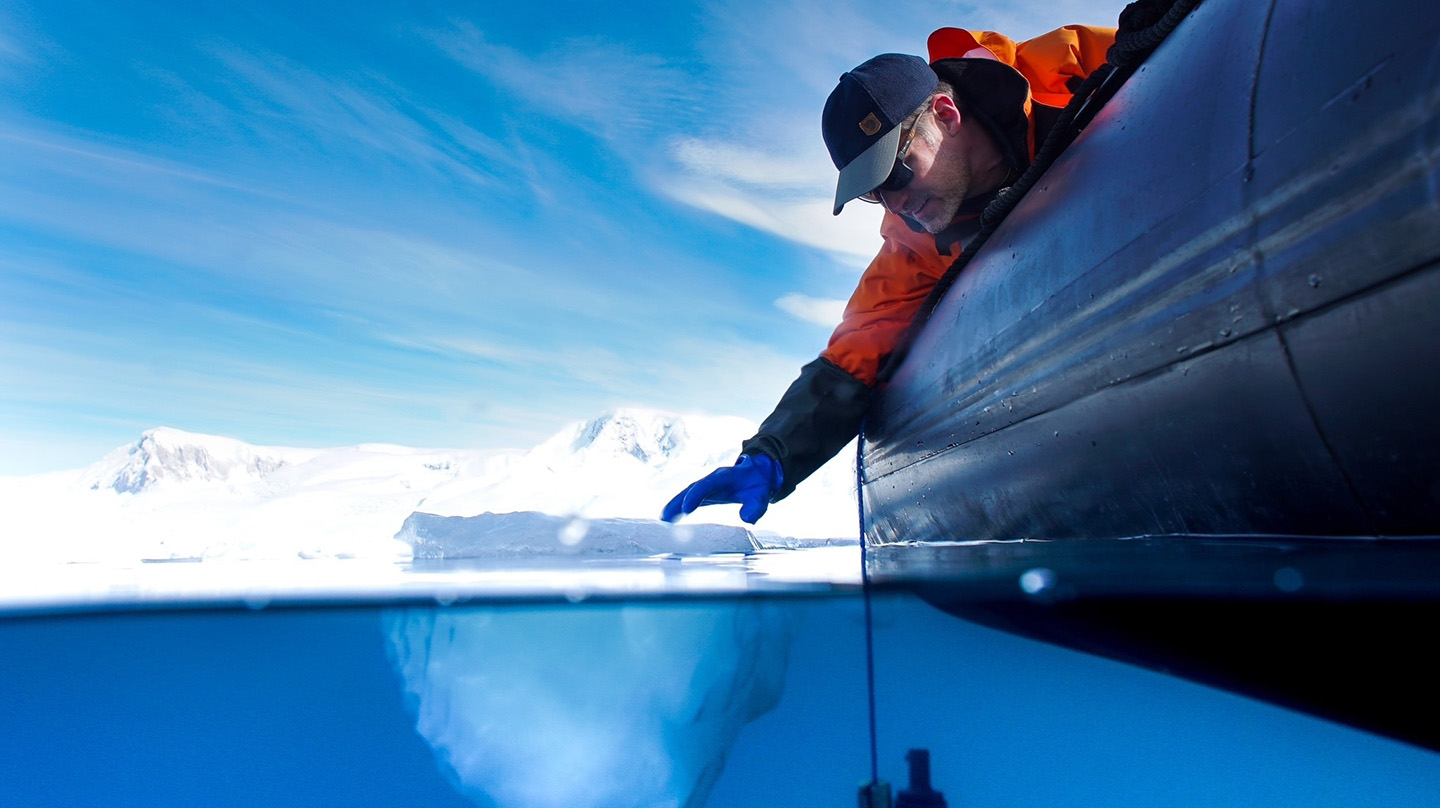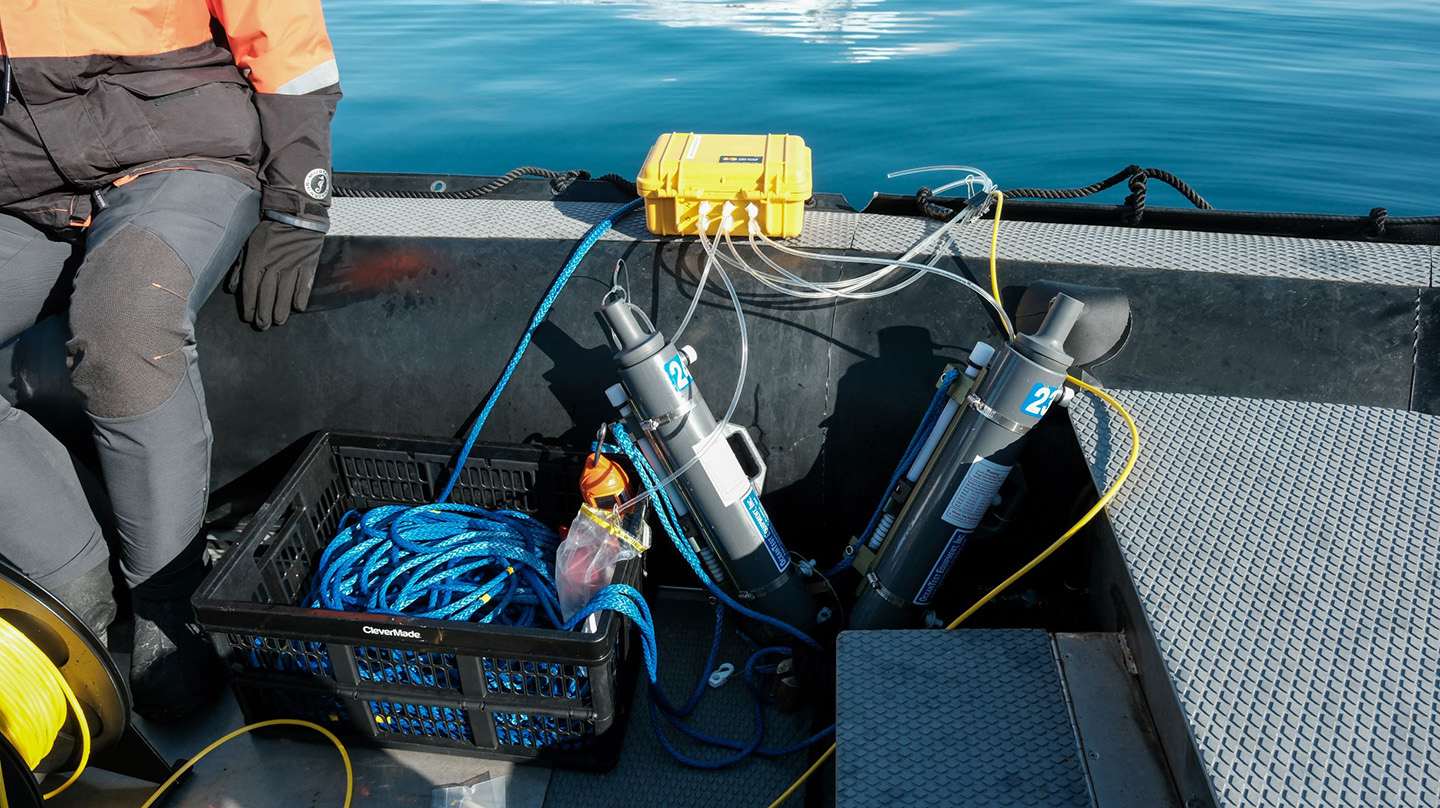News
Expanding eDNA Research and Physical Oceanography Into Critical Polar Regions
In February, Johns Hopkins Applied Physics Laboratory (APL) researchers Peter Thielen and David Porter ventured into uncharted territory in Antarctica aboard Lindblad Expeditions’ newest PC5 Category A ice class vessel National Geographic Resolution. The trip offered stunning vistas, penguin and marine mammal sightings and — most importantly — incomparable access to some of the most pristine habitats in the world, where Thielen, Porter and collaborating researchers simultaneously collected environmental DNA (eDNA) and physical oceanography data that has the potential to serve as a future global biological monitoring capability.
“We witnessed incredible phenomena,” said Porter, a longtime chief scientist in APL’s Force Projection Sector. “As we crossed the Antarctic Circumpolar Current — the strongest ocean current on the planet — the surface water temperature dropped almost two degrees in one boat length. We sampled biodiverse water deep into the Weddell Sea that was previously untouched due to sea ice accumulations and spent hours out on the water every day. It was a researcher’s dream.”
New Frontiers in Biological Research
eDNA analysis is a relatively new field of research and has emerged as an exciting way to study ocean biodiversity. As organisms move through their environments, they leave behind cells containing DNA. This dissolved information could potentially serve as a global biological monitoring capability, Thielen and co-authors describe in a recent publication.
“The ability to take a water sample and use it as a forensic identification tool is a transformational change in the way that we observe biological activity in the ocean,” said Thielen, a molecular biologist who oversees the Omics and Threat Detection Section in APL’s Research and Exploratory Development Department. “APL research and engineering projects are pushing the boundaries of what can be done with eDNA technology, and we’re now beginning to realize the full potential of these capabilities.”
eDNA can reveal what species were recently present near a specific location — useful information when monitoring water quality, identifying endangered or invasive species in a particular area, trying to ensure marine mammals aren’t in the vicinity during military field tests, and generally studying the ocean’s biodiversity and ecosystem.



